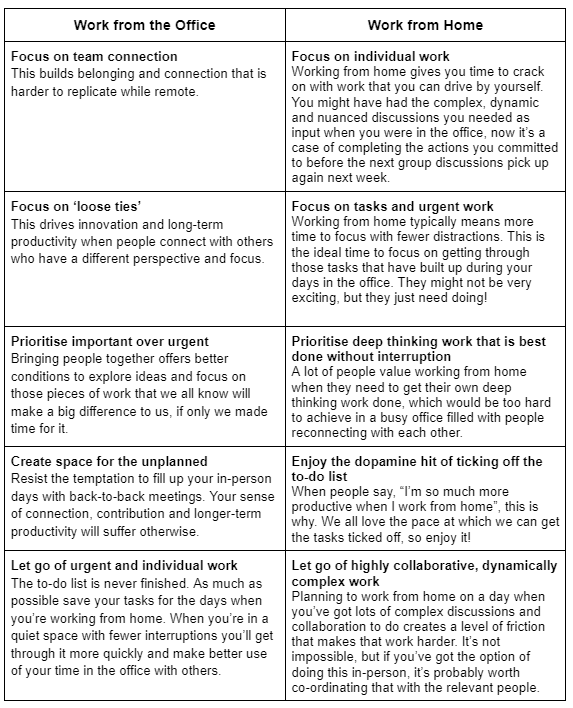Has working from home gone too far?
There is a lot of discussion at the moment about whether or not working from home has gone too far. There was a recent thoughtful opinion piece that outlined many of the key concerns by Susan Hornsby-Geluk.
What are the main issues that people worry about when it comes to too much working from home?
Our team connection and organisational culture are suffering
Some work just isn’t well suited to working from home and is best done face-to-face
And finally, what happened to dress standards?!
Connection and Culture
If we take team connection and organisational culture first, there is an argument that we need a mix of working from home and in-person. We know (from Nick Bloom’s CTrip study) that too much working from home can lead to isolation and loneliness. We also know that people want a sense of belonging to their team as well as more flexibility (from Massey University’s research in 2022). Hybrid work gives us a great opportunity to have quality connections with others, as long as we get better at making collective decisions. What we don’t want is a blanket rule that people need to be in the office at least two days per week, because it’s often uncoordinated. This often feels more like control, or at worst, punishment, rather than healthy hybrid work. When people make the effort to come to the office to reconnect with colleagues, they feel disheartened when they turn up to an empty office and spend all day on video calls. They understandably wonder why they bothered doing the commute and putting proper work clothes on (to the point about dress standards!)
To help with a team’s ability to make collective decisions about the days they’ll be together and what they’ll prioritise on those days, there’s a simple framework I’ve offered in the past: Me and We. It’s all about making sure we are collectively getting what we need from flex, as well as individually. This generates a much higher quality conversation in the team and enables people to make flexible work choices that are much less likely to create tension or be perceived as ‘entitled’, and instead create a culture of high-trust and quality connection, based on mutual benefit.
Which work is best done from where?
The other key issue is which work is best suited to which place. I wrote about this a while ago, as a way of maximising short-term and long-term productivity through hybrid work.
Choosing what work to do from where is another skill worth developing if we are to get the best from hybrid work. Just because we can technically do our work from anywhere at any time, it’s worth thinking about what work is BEST done from where.
Here are some ways to get more nuanced about the work you choose to do from which location, if you want the best of hybrid.
Too much, or better choices?
When it comes to too much working from home, rather than pull everyone back in the office, instead consider whether it’s worth investing in improving the quality of individual choices and collective decisions about what work is best done from where. If we are more deliberate about the way we work with hybrid, I really believe we will see a lift in both our short-term and long-term productivity, as well as employee wellbeing and retention, which is great for everyone.

